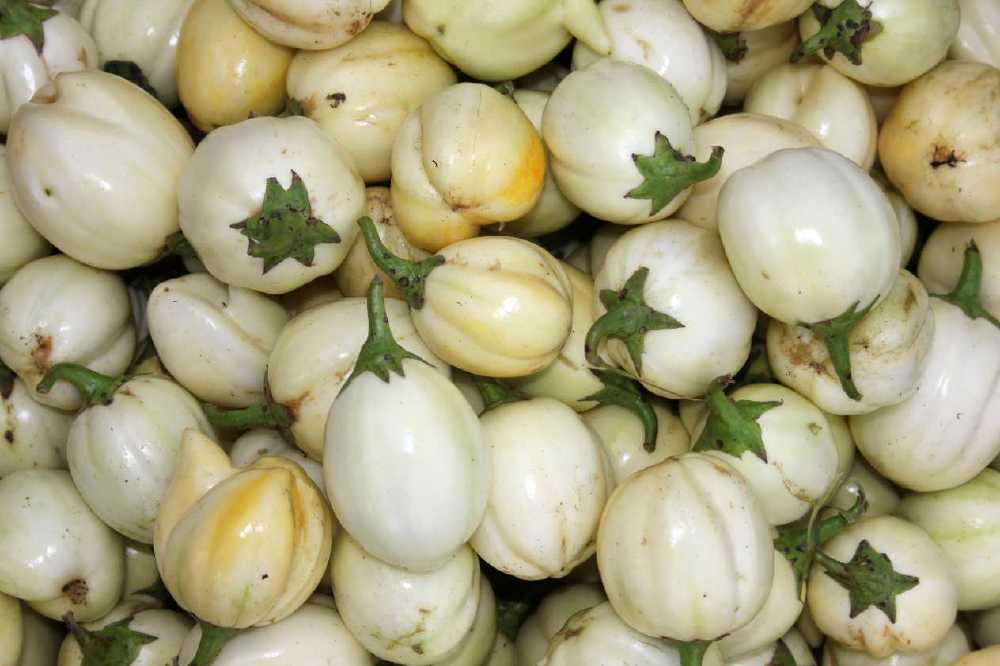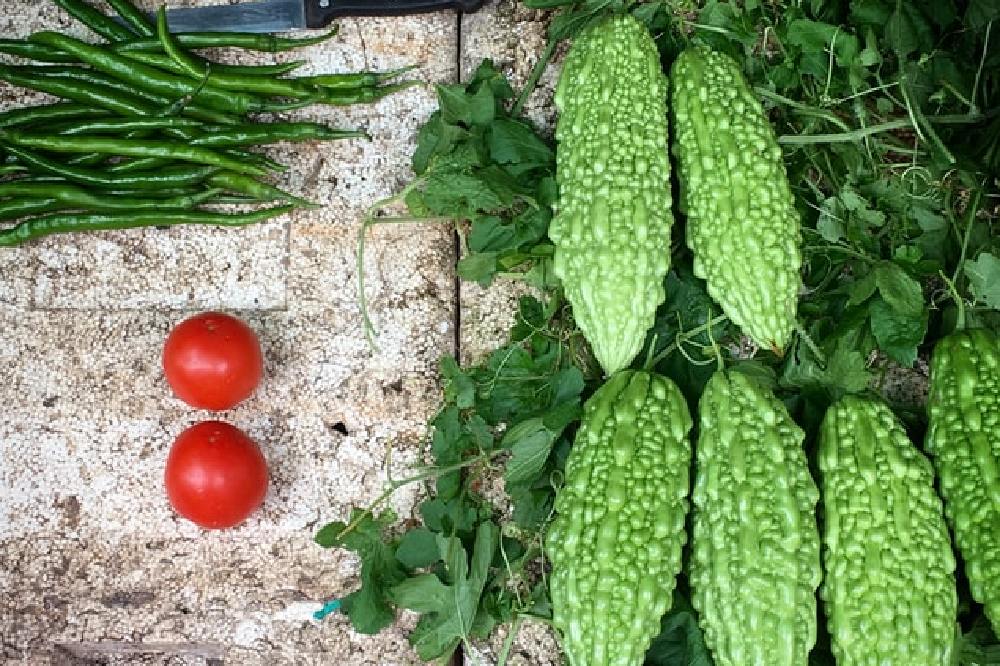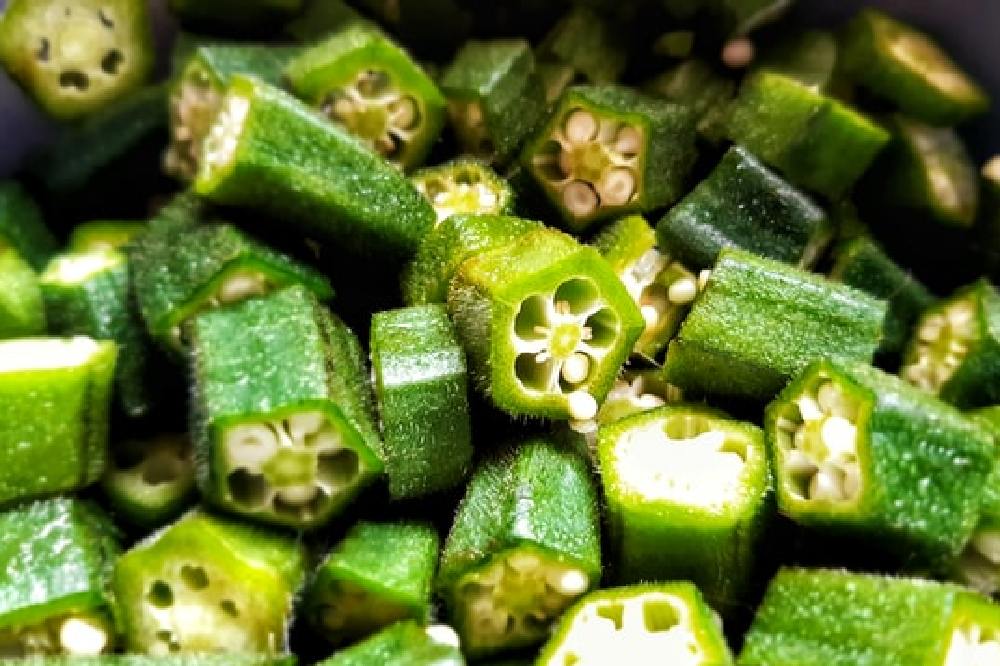By Yvonne Poon, Recipe Creator & Development Chef at Red Rickshaw

Garden eggs Sabena Jane Blackbird / Alamy Stock Photo
Cabbage and kale, carrots and cauliflower. Whether chopped, sautéed, boiled, roasted or fried, many Brits are used to cooking these vegetables in everyday meals. They provide so many nutritional health benefits but can sometimes leave our taste buds wanting more!
There are many unique vegetables from all over the world that can spice up weekly dinners and pack meals with a flavoursome punch.
For National Vegetarian Week, here are five unusual veggies from global cuisines that you may have never heard of, but can start cooking with right away to make your vegetarian dishes more adventurous and full of flavour:
Garden Eggs
This small, white fruit that’s part of the aubergine family is incredibly common in parts of Africa. They’re a great source of potassium, vitamin B1 and vitamin B6, helping to raise energy levels and support the healthy functioning of the nervous system. Garden Eggs are also recommended as a weight loss aid, as their high-fibre content fills you up. Popular as a low-cost meat alternative, their ability to soak up flavours means they’re ideal in vegetarian stews.
Karela

Karela, also known as bitter melon or bitter gourd, is common in Asian cuisine and is packed with antioxidants and anti-inflammatory compounds. It contains iron, magnesium, potassium, vitamin C and vitamin A, and twice as much calcium as spinach. With a distinctive taste, be adventurous and mix it into your next stir-fry or curry.
Tindora
Tindora, also known as Ivy Gourd, is native to India and is a similar to a cucumber as a gourd with a tough outer skin and small seeds inside - however, tindora differs from cucumber as it is to be eaten cooked. It’s traditionally used in Ayurvedic medicine as it’s packed with vitamin A, vitamin B, and beta-carotene, which protects the nervous system and aids combat fatigue. It’s also known for its toxin eliminating properties and helps lower blood sugar levels. It’s most popularly added to curries, soups, stir-fries and used as the main ingredient in Indian pickles and chutneys.
Okra

Okra is the seed pod of the Abelmoschus esculentus plant. It’s an excellent source of Vitamins C and K1, contributing to overall immune function and reducing blood clotting. The main use of Okra is bhindi curry for a main dish, or deep-frying it with spices as a crispy fried okra starter or snack.
Long Dudhi
Popularly grown across Asia and North America, this vegetable is vine-grown and distinguishable by its light green colour and smooth skin. Otherwise known as calabash, white gourd or Tasmania bean, it’s widely used in Thai cuisine. It has a hint of a peppery flavour with a fresh and slightly bitter taste. Its high-water content is great for hydration, and counteracts excessive sodium in the body which prevents fatigue. As it’s also rich in fibre, iron and protein and can aid in lessening digestive problems.
See below for a recipe on how to make Long Dudhi fritters as a tasty, vegetarian snack:
Red Rickshaw’s ‘Dudhi Fritters’ Recipe
Ingredients:
1 dudhi
1 tsp salt
70g gram flour
1 tsp garam masala
½ tsp turmeric
1 tsp cumin seeds
1 tsp ground coriander
1 green chilli, finely chopped
1 tsp garlic paste
4 tbsp coriander, finely chopped
Tamarind Chutney - for dipping
Method:
1. Peel and grate the dudhi, then mix with 1 tsp of salt. Leave for 15 minutes.2. Using your hands, squeeze the water out of the dudhi and discard the water. This will help each fritter hold together.
3. Add all spices, chillies, garlic paste and coriander to the dudhi along with the gram flour. Mix well to form a coarse batter.
4. Heat 1/2 cm of oil in a saucepan over a high heat. Once the oil is hot enough, dot heaped tablespoons of the dudhi batter around the saucepan and fry for 4-5 minutes, turning regularly to ensure they turn evenly crispy. Once the dudhi is crispy and brown on the outside, remove from the oil and drain on kitchen paper. Serve with a tamarind chutney.


